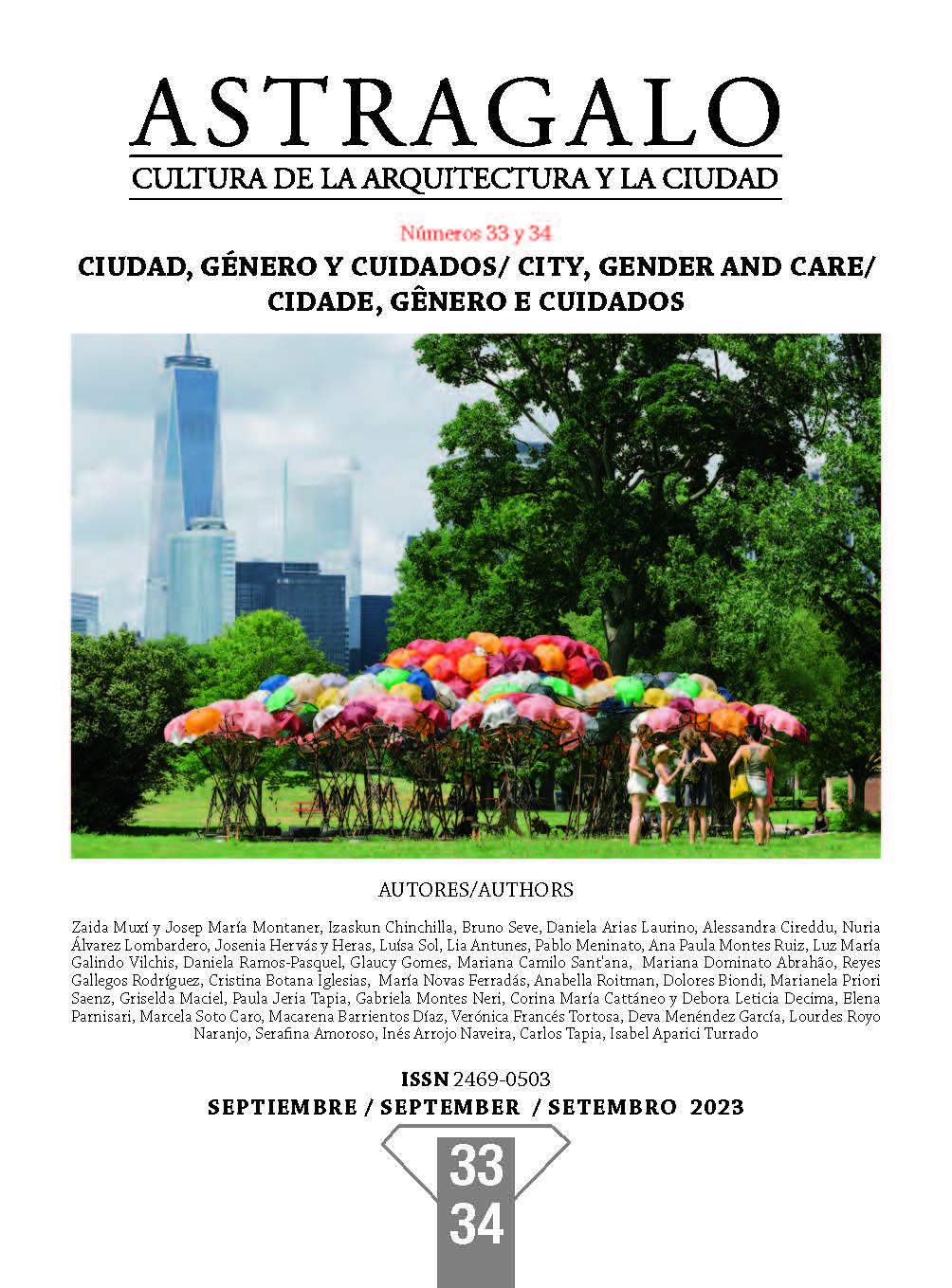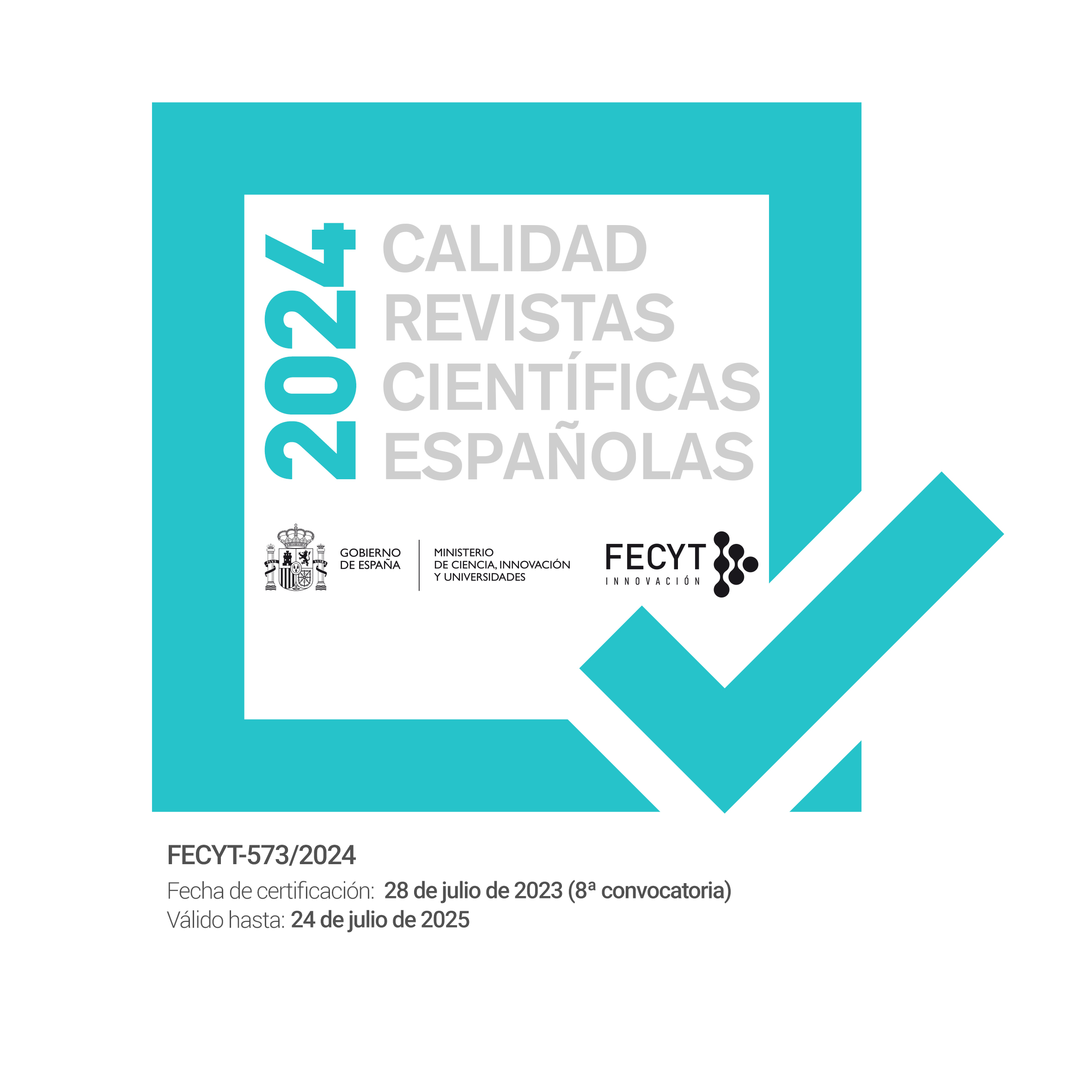Living... like this (So... wohnen). Wera Meyer-Waldeck as part of a network of architects involved in the way of living
DOI:
https://doi.org/10.12795/astragalo.2023.i33-34.06Keywords:
women architects, housing, exhibitions, Wera Meyer-Waldeck, So...wohnenAbstract
Through the figure of the architect Wera Meyer-Waldeck (1906-1964) as organizer of the exhibition So... Wohnen, a thin network of professional women is analyzed. In an early stage, at the end of the nineteenth century, Arminius, Hill, Henrietta Barnett and Addams were true social reformers. Already in the first half of the twentieth century the network extends from theorists and critics of architecture and urbanism, such as Bauer and Denby, to exhibition managers and interlocutors of a growing female population, who asked for new answers to the housing problem. All of them assume the design of the living space as a social responsibility, but Meyer-Waldeck demands more, as she seeks a female role in residential planning. There is evidence of a meeting between Bauer and Meyer-Waldeck. On the other hand, Bauer and Alison Smithson update the figures of Hill and Addams. There are coinciding points between the thinking of the couple of architects Alison and Peter Smithson (admirers of the work of Lilly Reich) and Meyer-Waldeck. These intersections allow us to affirm that the exhibition So... wohnen shows a new vision of austerity, where the ordinary becomes heroic (as the Smithsons and the Bauhaus would say) in post-war times.
Downloads
References
Arregui, Elena. “La opinión de las mujeres”. Arquitectura 54: 32-36.
Bauer, Catherine. 1934. Modern Housing. Cambridge MA: The Riverside Press
Bauhaus-Archiv Berlin. Carpeta Meyer-Waldeck.
Bauhaus-Archiv Berlin, nº 12464. Escrito mecanografiado: Explicaciones sobre el tema “El modo de residir en la ciudad del mañana”, Bonn 3-10-57, Traducido por Esteban Herrero Cantalapiedra.
Bauhaus Archive-Berlin. Das „Stief”-Kind und der Architekt (El “hijastro” del arquitecto). Recorte de prensa sin fechar (década años 50).
Boletín de Información de la Dirección General de Arquitectura, vol. III, nº6, marzo 1948. Información facilitada por el arquitecto Rodrigo Almonacid.
Denby, Elizabeth. 2015. Europe Rehoused. New York: Routledge. Prólogo de Elizabeth Darling. Original de 1938, Londres: Allen&Unwin.
Die Bundespräsidenten. Elly-Heuss-Knapp/elly. Die Bundespräsidenten. https://www.bundespraesident.de/DE/Die-Bundespraesidenten/Theodor-Heuss/Elly-Heuss-Knapp/elly-heuss-knapp-node.html. Acceso 14-05-23
Die Stadt von Morgen. Interbau 1957. Die Stadt von Morgen, Flyer historisch. http://www.diestadtvonmorgen.de/uploads/media/flyer_historisch.pdf. Acceso 08-05-2023.
Deutsche Wohnungsgesellschaft mbH - DEWOG. https://www.dewog.de. Acceso 12-5-2023.
Espegel, Carmen. 2007. Heroínas del espacio. Buenos Aires: Nobuko.
García Roig, José Manuel. 2002. Arquitectos alemanes. Arquitextos desconocidos.3.Martin Wagner. Madrid: ETSAM.
Hansaviertel Berlin.Geschicthe Interbau 57. Hansaviertel Berlin. https://hansaviertel.berlin/interbau-1957/geschichte-interbau-57/. Acceso 06-05-2023
Hervás y Heras, Josenia. 2015. Las mujeres de la Bauhaus: de lo bidimensional al espacio total. Buenos Aires: Diseño Editorial.
Hervás y Heras, Josenia. 2017. “Eine Bauhaus-Architektin in der BRD: Wera Meyer-Wadeck”. En Frau Architekt, 167-171. Ed. Pepchinski. Frankfurt: Deutsches Architekturmuseum.
Luna, Lorena, Holguín Rosero, y Obando Apraez. 2020. “Octavia Hill y sus aportes en el origen de Trabajo Social en la Inglaterra del siglo XIX”. Trabajo Social 22 (1): 203-223. doi.org/10.15446/ts.v22n1.78912
Maasberg, Ute y Prinz, Regina. 2004. Die Neuen kommen! Weibliche Avantgarde in der Architektur der zwanziger Jahre. Hamburg: Junius.
Meyer-Waldeck, Wera. 1951. “Better Furnishings for West German Homes Urged by Woman Architect”. The Christian Science Monitor, Boston, 22 enero 1951, 12.
Meyer Waldeck, Wera. 1954. “In Finnland beobachtet”. Werk und Zeit, nº4, 2-3.
Meyer Waldeck, Wera. 1954. “Kleine Visite in Harvard und Berk[e]ley”. Werk und Zeit, nº6, 6.
Meyer-Waldeck, Wera. 1957. “Das Wohnen in der Stadt von morgen”. En Interbau Berlin 1957, 343. Berlin: Internationale Bauausstellung Berlin GmbH.
Meyer-Waldeck, Wera. 1960. “Menschlich wohnen-glücklich leben-für alle”. Blätter der Gesselschaft für christliche Kultur Düsseldorf, nº. 11-12, 23-30.
Muxí, Zaida. 2018. Mujeres, casas y ciudades. Barcelona: DPR-Barcelona.
Otto, Karl. 1959. Die Stadt von morgen. Berlin: Gebr. Mann.
Pepchinski, Mary. 2019. “Für jede Familie eine Alleinstehende. Die Bauhaus-Architektin Wera Meyer -Waldeck und die Herausforderungen der Unterbringung älterer Frauen im Westdeutschland der Nachkriegszeit”. Frauen blicken auf die Stadt, 163-197. Berlin: Dietrich Reimer.
Sica, Paolo. 1981. Historia del Urbanismo. El siglo XX. Madrid: Instituto de estudios de Administración Local.
Smithson, Alison y Peter. 1953. “An urban Project: Golden Lane”. Architect´s Year Book 5. London: Elek Books Ltd.
Smithson, Alison y Peter. 2001. Cambiando el arte de habitar. Barcelona: Gustavo Gili. Original Londres, 1994.
Smithson, Alison y Peter. 2023. Sin Retórica. Barcelona: Puente editores. Original Londres, 1973.
Stadtarchiv Bonn, carpeta N03/54, Exposiciones en Bonn 1950-1952. Consulta realizada por la autora junto a Esteban Herrero Cantalapiedra en agosto de 2022, 75.
Stephens, Suzanne. 1977. “Voices of Consequence: four Architectural Critics”. En Women in American Architecture: A Historic and Contemporary Perspective, edit. Susana Torre, 170-180. New York: Whitney Library of Design.
Winkler, Klaus-Jürgen. 2003. Baulehre und Entwerfen am Bauhaus 1919-1933. Weimar: Universitätsverlag.
Downloads
Published
How to Cite
Issue
Section
License
Copyright (c) 2023 Josenia Hervás y Heras

This work is licensed under a Creative Commons Attribution-NonCommercial-ShareAlike 4.0 International License.


















